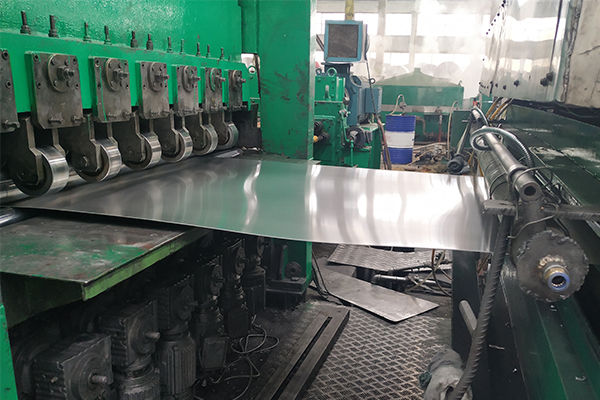The aluminium sheet metal fabrication can be divided into cold rolling and hot rolling, each of which has a series of process overflow. Here are the details.
Cold Rolling of Aluminium Sheet Metal
The rolling process below the recrystallization temperature of metals and alloys is called cold rolling. During cold rolling, although the heat of deformation and friction of the metal can also make the temperature of the rolled product high and have a certain recovery effect, the main role in cold rolling is cold rolling hardening (work hardening).
Process overflow: aluminum ingots-smelting-rolling into coil rolls and sheet plates by casting and rolling mills.
Weaknesses
In comparison to hot rolled aluminium sheet metal products, cold rolled ones have a higher production efficiency, but they have obvious defects which are not easy to solve, such as component segregation, high impurities and so on, which makes its quality not so good as hot rolled materials.

Strengths
Compared with hot rolling, the main feature of cold rolling is to obtain thinner strips. Usually the thickness of the hot-rolled aluminium sheet slab is from 6mm to 8mm. The minimum thickness is 2.5mm-3.0mm. In the hot rolling process, due to the large temperature drop of the rolled product, it is difficult to continue the hot rolling to a thinner thickness, and cold rolling can easily make the rolled product thinner. Generally, cold rolling mills can roll aluminium sheets to a thickness from 0.5mm to 4.5mm. Compared with advanced cold rolling mills, ultra-thin or thick foils with a thickness of 0.1mm-0.2mm can be rolled out. Compared with hot rolling, the main features of cold rolling are cold rolled products with precise dimensions, uniform thickness, good flatness and surface gloss, good product properties and high surface quality.
Hot Rolling for Aluminium Sheet Metal
Hot rolling generally refers to rolling above the metal recrystallization temperature. During the hot rolling process, the metal deformation has both hardening and softening processes. Due to the influence of the deformation speed, as long as the recovery and recrystallization processes are too late, the metal will undergo work hardening with the increase of the deformation. However, in the hot rolling temperature range, the softening process plays a leading role. Therefore, at the end of hot rolling, the recrystallization of the metal is often incomplete.
Process Overflow: Aluminum ingots-smelted and cast into flat ingots-milled surface-homogenized annealing-hot rolled into sheets and rolls
Cold Rolled Aluminium Categories
Aluminum and aluminum alloy hot rolled products are generally divided into two categories, one is hot rolled coil, and the other is hot rolled thick plate.
Hot-rolled thick plates refer to aluminum and aluminum alloy plates with a thickness of not less than 7.0mm. The main varieties are hot-rolled plates, annealed plates, and quenched or quenched pre-stretched plates. Hot-rolled thick plates are usually produced on a hot-rolling mill using the slab method. The traditional process is: ingot homogenization-milling-heating-hot rolling-cut to length-straightening. (Reference: Pure aluminum plate)
Aluminum alloy sheets and strips with a thickness less than 7.0mm are usually produced by hot-rolled coils. The products are mainly used as cold-rolled blanks and also used to produce sheets. The modern production process is: ingot milling surface-heating >> Hot Roughing-Hot Continuous Milking-Baling and Weighing.